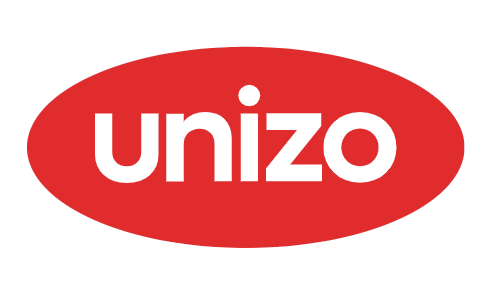For an export company, getting the administrative formalities right is a major challenge. Find out in good time about the commercial documents required for exporting. From transport contracts and forms to pro forma invoices and customs formalities: here are the main documents.
Export declaration (or Single Administrative Document - SAD)
You are generally required to submit an export declaration for all goods leaving the customs territory of the EU, unless:
- The value of your goods per shipment does not exceed €3,000 and the goods are not subject to any restrictions or prohibitions;
- Your goods are not being transported for commercial purposes;
- You are a private individual importing or exporting personal goods.
Who files the customs declaration?
The customs declaration can be filed either by the owner of the goods, or by a customs agent.
A customs agent is a natural or legal person who can carry out import and export customs formalities on your behalf. Generally speaking, agents also provide forwarding services, i.e. they can help you organise and contract the transport of your goods.
If you choose not to use a customs agent, it is up to you or your importer in the destination country, depending on the Incoterms® used in your contract, to fill in the customs declaration.
How do I fill in the customs declaration?
The export declaration can be completed either by the owner of the goods or by a customs broker.
In order for it to be accepted by the customs authorities, the declaration should contain at least the following information:
- the origin of the goods;
- the country to which the goods are being shipped;
- the goods code ;
- the customs procedure code;
- the value of the goods.
Declarations not containing this information will be automatically rejected.
Information on how to complete the automated export declaration (single document) can be found on the SPF Finances website (FR), on the European Commission's page on the Single Administrative Document and in Commission Delegated Regulation (EU) 2016/341, dated 17 December 2015, Appendix B1 - Single Administrative Document Form.
If you decide to outsource the customs procedure, you can find a complete list of customs representatives here. This list also includes individuals who present declarations only for themselves.
If you choose a broker, be sure to include the following information:
- The name, address and EORI number of your company;
- Information about your product, a description of the goods and gross weight;
- The documents required for export;
- Information about your customer (company name, address and EORI number);
- The current location of the goods.
Once the broker has been engaged and provided with the information, it is advisable to continue monitoring the progress of the export.
What happens after the export declaration is filed?
Once you have submitted your export declaration, you will receive a message from the customs authorities stating whether or not your declaration has been accepted by the system.
Your goods may be selected for further inspection. In this case, you will need to present the customs authorities with all the relevant documents to clear your goods through customs.
In addition to the above controls, your goods may be selected for a physical inspection. In which case, in addition to the documents, the authorities will check whether the goods declared match the actual goods.
After this, your goods will be cleared for export, i.e. they will be allowed to leave Belgium.
If there is a mistake in the information provided in the customs declaration, what can I do?
Once the goods declaration has been assessed by the system (and accepted or not), you can make changes as long as there are no changes to the actual goods covered by the declaration.
Subsequent rectification is also possible. You will need to fill in a special form for this purpose. You can find more information on this subject by following this link.
Subsequent checking is still possible. If the mistake proves to be recurrent and serious, such as incorrect tariff classification or a false customs value, it should be noted that fines may be applied.
Declaration of customs value
The customs value is determined by the price paid or payable for the goods exported. Transport and insurance costs until the goods leave Belgium should be added, if these costs are not already included in the final price of the goods. This is what we call the transaction value.
When the customs value exceeds €20,000, a declaration of customs value (DV1) should be filled in. This is a document presented to the customs authorities at the same time as the single administrative document (the export declaration). Your customs agent will take care of this formality if you decide to outsource your customs formalities.
The declaration of customs value should comply with the DV1 form, which you will find in Annex 8 of Commission Delegated Regulation (EU) 2016/341, dated 17 December 2015.
Proforma and commercial invoices
For each shipment, you need to include the commercial invoice. If your product has not yet been sold at the time of export, you should enclose the proforma invoice with the goods.
What is the difference between a proforma invoice and a commercial invoice?
By definition, a proforma invoice is a formal invoice. It therefore resembles a final invoice. A proforma invoice is a provisional document that details the price of the goods and the general conditions of sale, and reflects the actual value of the goods before the sale takes place. In this regard, it is more like an estimate than an invoice. It is a purely informative document with no accounting or legal value. A proforma invoice is required when exporting goods outside the EU, if they are not intended for sale. It is mainly used in the following cases:
- When the sale has not yet taken place;
- To send gifts;
- To send samples;
- For the return of goods to the supplier.
Who issues a commercial invoice?
The seller or exporter issues the commercial invoice as proof of sale.
What information should be included on the commercial invoice?
The commercial invoice should contain at least the following information:
- the name and address of the exporter and the importer;
- invoice issue date;
- invoice number;
- a description of the goods sold;
- the unit of measurement;
- the quantity of goods sold;
- the HS code of the goods;
- the unit value;
- the total value of the sale;
- the total value of the invoice and the currency used for payment;
- the payment terms, including payment method, date and any discounts;
- The delivery terms and Incoterms® used;
- the means of transport.
The following information should be included on your invoice:
- for deliveries of goods, the words "Exempt - Article 146 Directive 2006/112/EC";
- for your services, the words "No EU VAT - article 44 Directive 2006/112/CE".
How should I fill in the invoice?
The commercial invoice can be filled in electronically in accordance with the European digital invoicing rules. These rules are mandatory for business-to-business transactions.
Where should I put the commercial invoice when shipping?
The commercial invoice should always accompany the goods. If you are sending your goods by post, you will need to present two copies along with the original commercial invoice. The three copies of the commercial invoice should be placed in a transparent envelope and attached to the parcel.
Transport documents
Draw up shipping documents in accordance with commonly accepted Incoterms® (International Commercial Terms). These terms define the tasks, responsibilities and administrative obligations of both contracting parties.
There are different types of transport documents. The exact type of document you need depends on the mode of transport used:
- Road transport: CMR consignment note or TIR Carnet
The TIR Carnet (INTERNATIONAL ROAD TRANSPORT) facilitates the transport of goods to a country outside the EU, or the transit through the territory of a country outside the EU or the European Free Trade Association (Liechtenstein, Norway, Iceland and Switzerland) of goods destined for another EU country. It reduces formalities and waiting times at the border. In Belgium, the TIR carnet is issued by the Royal Belgian Federation of Transporters and Logistics Service Providers (Febetra in French). - Maritime transport: the Bill of Lading
The Bill of Lading (BoL) is issued by the shipping line as proof of receipt of the goods by the carrier, obliging him to deliver the goods to the importer. - Air transport: Air waybill (AWB)
Like the waybill, the air waybill (AWB) serves as proof of the contract of carriage with the carrier and of receipt of the goods. This document can be used for numerous different shipments. - Rail transport: the CIM consignment note
The rail consignment note (CIM) is a contract for carriage by rail, issued by the rail carrier in five copies.
Packing list
- the number of pallets, if applicable
- the number of packages per pallet or the total number of packages
- the number of items per package
- the gross and net weight and volume of each package and/or pallet
- the number assigned to each package
- the contents of each package
- the product references and their brand
It enables the various parties involved (shippers, carriers, customs inspectors, warehousemen, customers, etc.) to check the conformity of the goods shipped on the basis of the invoice issued. It should be put in the transparent envelope together with the copies of the proforma or commercial invoices.
VAT and proof of export
When you ship or transport goods outside the European Union, they are exempt from value-added tax (VAT). The rule is the same whether your customer is a company or an individual. To be able to justify the non-submission of your invoice to Belgian VAT in case of a tax audit, you need to keep proof that your goods were indeed shipped outside the EU. So be sure to keep a copy of your customs export document (Single Administrative Document - SAD) if you have one, a certificate issued by the customs authorities, or your goods transport document.
ATA Carnet
The ATA Carnet is a unique customs document that allows you to import goods temporarily, without having to pay customs duties or taxes, into non-EU countries or assimilated areas that are members of the ATA network, for a very specific use, that is:
- in the context of a trade fair, exhibition or similar event;
- for professional equipment;
- for the presentation of samples abroad.
71 countries are currently members of the ATA chain, including 44 outside the EU.
Note that this carnet can also be used in countries that are not members of the chain. In this case, the exporter will not be exempted from the classic "temporary export" customs procedure, but his carnet will exempt him from import duties on the return of his goods to Belgium, as the ATA carnet is validated by a local customs office before departure.
Issuing ATA Carnets is within the exclusive competence of the Chambers of Commerce. For further information, please see this page on this subject.
Who can help me ?




